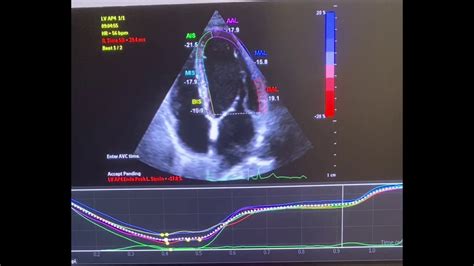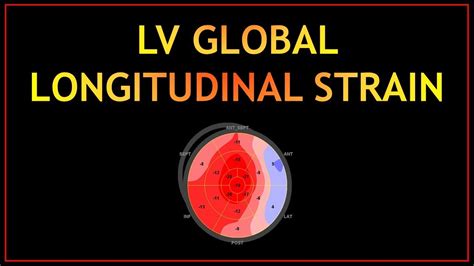lv strain echo normal values | global longitudinal strain chart lv strain echo normal values Echocardiographic global longitudinal strain (GLS) has been recommended as a means to follow patients at risk of cancer chemotherapy-related left ventricular (LV) systolic . Kids LEGO® Backpacks. LEGO® backpacks – there's one for everyone! Designed to look cool at school, from the classroom to the canteen and beyond. Shop from a wide variety .
0 · strain imaging echocardiography
1 · lv global longitudinal strain meaning
2 · gls on echocardiogram
3 · gls echo meaning
4 · global longitudinal strain gls
5 · global longitudinal strain chart
6 · ase strain guidelines 2018
7 · abnormal global longitudinal strain
2024 EDC Las Vegas - VIP Elevated Experience Pass. at Las Vegas Motor Speedway. Show at 5:00PM. Ages 21+ Only. Select Tickets. From $1249.99.Since moving to Las Vegas from Los Angeles in 2011, the dance-music festival has drawn 1.7 million fans to Las Vegas and funneled $1.3 billion into the local economy, in addition to generating.
The reference ranges for left ventricular (LV) global longitudinal strain and right ventricular free-wall strain were −24% to −16% and −35% to −17%, respectively. Correspondingly, left atrial (LA) and right atrial (RA) reservoir strains were . Echocardiographic global longitudinal strain (GLS) has been recommended as a means to follow patients at risk of cancer chemotherapy-related left ventricular (LV) systolic .Global radial strain ranged from 35.1% to 59.0% (mean, 47.3%; 95% CI, 43.6% to 51.0%). There was significant between-study heterogeneity and inconsistency. The source of variation was .Results: The search identified 2,597 subjects from 24 studies. Reported normal values of GLS varied from -15.9% to -22.1% (mean, -19.7%; 95% CI, -20.4% to -18.9%). Normal global .
Regardless of vendor or clinical covariate, a GLS <16% likely indicates significant myocardial dysfunction. This is the first study to reliably define GLS variance in a normal population and may now support the routine use of GLS as a clinical .
A, Baseline echocardiogram shows normal left ventricular strain (2-dimensional global longitudinal strain). B, Reduced global longitudinal strain with a nonspecific pattern, consistent with trastuzumab-induced cardiomyopathy.This document provides updated normal values for all four cardiac chambers, including three- dimensional echocardiography and myocardial deformation, when possible, on the basis of .
To obtain the normal ranges for 2D echocardiographic (2DE) measurements of left ventricular (LV) strain from a large group of healthy volunteers accounting for age and gender. .Normal ranges of layer specific strain (longitudinal and circumferential) are provided in this meta-analysis according to 3 vendors: EchoPAC, Toshiba and VVI. Layer specific strain decrease .
strain imaging echocardiography
Normal values for LV chamber dimensions (linear), volumes and ejection fraction vary by gender. A normal ejection fraction is 53-73% (52-72% for men, 54-74% for women). Refer to Table 2 (normal values for non-contrast images) and Table 4 (recommendations for the normalThe reference ranges for left ventricular (LV) global longitudinal strain and right ventricular free-wall strain were −24% to −16% and −35% to −17%, respectively. Correspondingly, left atrial (LA) and right atrial (RA) reservoir strains were 17% to 49% and 17% to 59%. Echocardiographic global longitudinal strain (GLS) has been recommended as a means to follow patients at risk of cancer chemotherapy-related left ventricular (LV) systolic dysfunction. The following are pragmatic points to remember:
Global radial strain ranged from 35.1% to 59.0% (mean, 47.3%; 95% CI, 43.6% to 51.0%). There was significant between-study heterogeneity and inconsistency. The source of variation was sought between studies using meta-regression.
Results: The search identified 2,597 subjects from 24 studies. Reported normal values of GLS varied from -15.9% to -22.1% (mean, -19.7%; 95% CI, -20.4% to -18.9%). Normal global circumferential strain varied from -20.9% to -27.8% (mean, -23.3%; 95% CI, -24.6% to -22.1%).

Regardless of vendor or clinical covariate, a GLS <16% likely indicates significant myocardial dysfunction. This is the first study to reliably define GLS variance in a normal population and may now support the routine use of GLS as a clinical decision-making tool.A, Baseline echocardiogram shows normal left ventricular strain (2-dimensional global longitudinal strain). B, Reduced global longitudinal strain with a nonspecific pattern, consistent with trastuzumab-induced cardiomyopathy.This document provides updated normal values for all four cardiac chambers, including three- dimensional echocardiography and myocardial deformation, when possible, on the basis of considerably larger numbers of normal subjects, compiled from multiple databases. To obtain the normal ranges for 2D echocardiographic (2DE) measurements of left ventricular (LV) strain from a large group of healthy volunteers accounting for age and gender. Methods and results.
Normal ranges of layer specific strain (longitudinal and circumferential) are provided in this meta-analysis according to 3 vendors: EchoPAC, Toshiba and VVI. Layer specific strain decrease from the endocardial to the epicardial layer in both longitudinal and circumferential strain.Normal values for LV chamber dimensions (linear), volumes and ejection fraction vary by gender. A normal ejection fraction is 53-73% (52-72% for men, 54-74% for women). Refer to Table 2 (normal values for non-contrast images) and Table 4 (recommendations for the normalThe reference ranges for left ventricular (LV) global longitudinal strain and right ventricular free-wall strain were −24% to −16% and −35% to −17%, respectively. Correspondingly, left atrial (LA) and right atrial (RA) reservoir strains were 17% to 49% and 17% to 59%. Echocardiographic global longitudinal strain (GLS) has been recommended as a means to follow patients at risk of cancer chemotherapy-related left ventricular (LV) systolic dysfunction. The following are pragmatic points to remember:
Global radial strain ranged from 35.1% to 59.0% (mean, 47.3%; 95% CI, 43.6% to 51.0%). There was significant between-study heterogeneity and inconsistency. The source of variation was sought between studies using meta-regression.Results: The search identified 2,597 subjects from 24 studies. Reported normal values of GLS varied from -15.9% to -22.1% (mean, -19.7%; 95% CI, -20.4% to -18.9%). Normal global circumferential strain varied from -20.9% to -27.8% (mean, -23.3%; 95% CI, -24.6% to -22.1%).Regardless of vendor or clinical covariate, a GLS <16% likely indicates significant myocardial dysfunction. This is the first study to reliably define GLS variance in a normal population and may now support the routine use of GLS as a clinical decision-making tool.A, Baseline echocardiogram shows normal left ventricular strain (2-dimensional global longitudinal strain). B, Reduced global longitudinal strain with a nonspecific pattern, consistent with trastuzumab-induced cardiomyopathy.
This document provides updated normal values for all four cardiac chambers, including three- dimensional echocardiography and myocardial deformation, when possible, on the basis of considerably larger numbers of normal subjects, compiled from multiple databases.
To obtain the normal ranges for 2D echocardiographic (2DE) measurements of left ventricular (LV) strain from a large group of healthy volunteers accounting for age and gender. Methods and results.
rolex band

rolex service centre kings hill
Sākums - EG. Kokapstrādes izstrādājumi Tavai ikdienai. Ražoti Latvijā! Elektroinstrumentu Makita veikals, remontdarbnīca, garantijas remonts, serviss.
lv strain echo normal values|global longitudinal strain chart



























